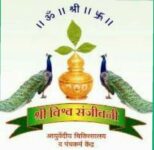Ayurveda
The nature’s gift for natural healing is told in Sanskrit language by way of Shlokas. The word Ayurveda is formed by the combination of two words- “Ayu” meaning life, and “Veda” meaning knowledge. Ayurveda is regarded as “The Science of Life” and the practice involves the care of Physical, mental, Social & Spiritual health of human being
प्रयोजन चास्य स्वस्थ्य स्वास्थ्य |
रक्षण आतुरस्य विकार प्रशमनं च ||
which means Ayurveda aims at maintaining good health in a healthy persons and aims to cure the person who is diseased or sick.
That is
The two principle objective of Ayurveda are:-
To prolong life span and promote perfect health.
To eradicate the disease from the body and mind.

“समदोष समाग्निश्र्च सम धातुमल क्रिया: प्रसन्नात्मैन्द्रिया मन: स्वस्थ इत्यभिधियते |” Is health as defined in AYURVEDA.
What is Health
Wherein the importance is givento maintain balancein theTridoshas(Vata, pitta, kapha), the Saptha Dhathus (Rasa, Raktha, Medha, Mamsa, Asthi, Majja, Shukra),Sama Agni (As per Ayurveda Agni is the root for good health & disease where in it is explained that a healthy person has normal Agni which is imbalanced in a sick person hence, the main aim in Ayurveda is to restore the Agni to normalacy if Vitiated).
There is also mention of proper functioning of Malakriya or excretion like stools, urine, hiccups, sweat which should not be suppressed. The suppression may leadto diseases. Above all the authors in Ayurveda havegiven importance to Prasanna Atma Indriya i.e six senses viz Eye, Nose, Ears, Tongue, along with the Atma(Soul) & Manaha(Mind) which shall keep a person healthy happy& disease free as the Adage goes a Healthy mind in a Healthy body needs no cure.
Preventive aspect is given importance by following Dinacharya,Ritucharya, Rasayan
PREVENTION :
Swasthavrutha deals with the Ayurvedic lifestyle &maintainance of life. It emphasises mainly on the proper daily regimen as well as seasonal regimen to be followed, what is being told as preventive & social medicine in the modern era. In the Ayurvedic Science about 5,000 years back where in the emphasis on daily, seasonal & sick regimens were explained to prevent diseases rather than treat diseases.
DINACHARYA
DINACHARYA is the daily routine where in it is explained in detail as to how a person should follow his routine from waking up in the BrahmiMuhurtha(early morning ), exercise,bathing, eating food,till he retires for the day.Or in other words importance was given to cleanliness, personal hygience and preventive aspects in certain sick conditions.
RASAYAN
Rasayana means rejuvenation and anti-ageing therapies in Ayurveda. It also includes all measures for geriatric healthcare and immunity enhancement. Rasayana essentially denotes medicinal nutrition, rejuvenation, longevity, immune-enhancing and geriatric health care. The rasayana are not necessarily drugs. They may be in the form of a rasayana food, or a positive healthy life style with a rasayana effect or a rasayana drug or all the three together. The rasayana remedies promote good qualities of the cells and tissues of the body through improved nutrient effect, boosting the digestion, metabolism and/or augmenting the microcirculation and tissue perfusion.i.e.Chyawanpras.
RITUCHARYA
RITUCHARYA explains the routine a person has to follow as per the seasons mentioned in the various Ayurvedic texts. There is mention of six ritus(seasons) like-Hemanth , shishir , greeshma, sharada, varsha, vasantha, where in as per the seasons Do’s&Don’ts, pathya/apathya is explained in detail to maintaina healthy life as per the seasons which helps in prevention rather
